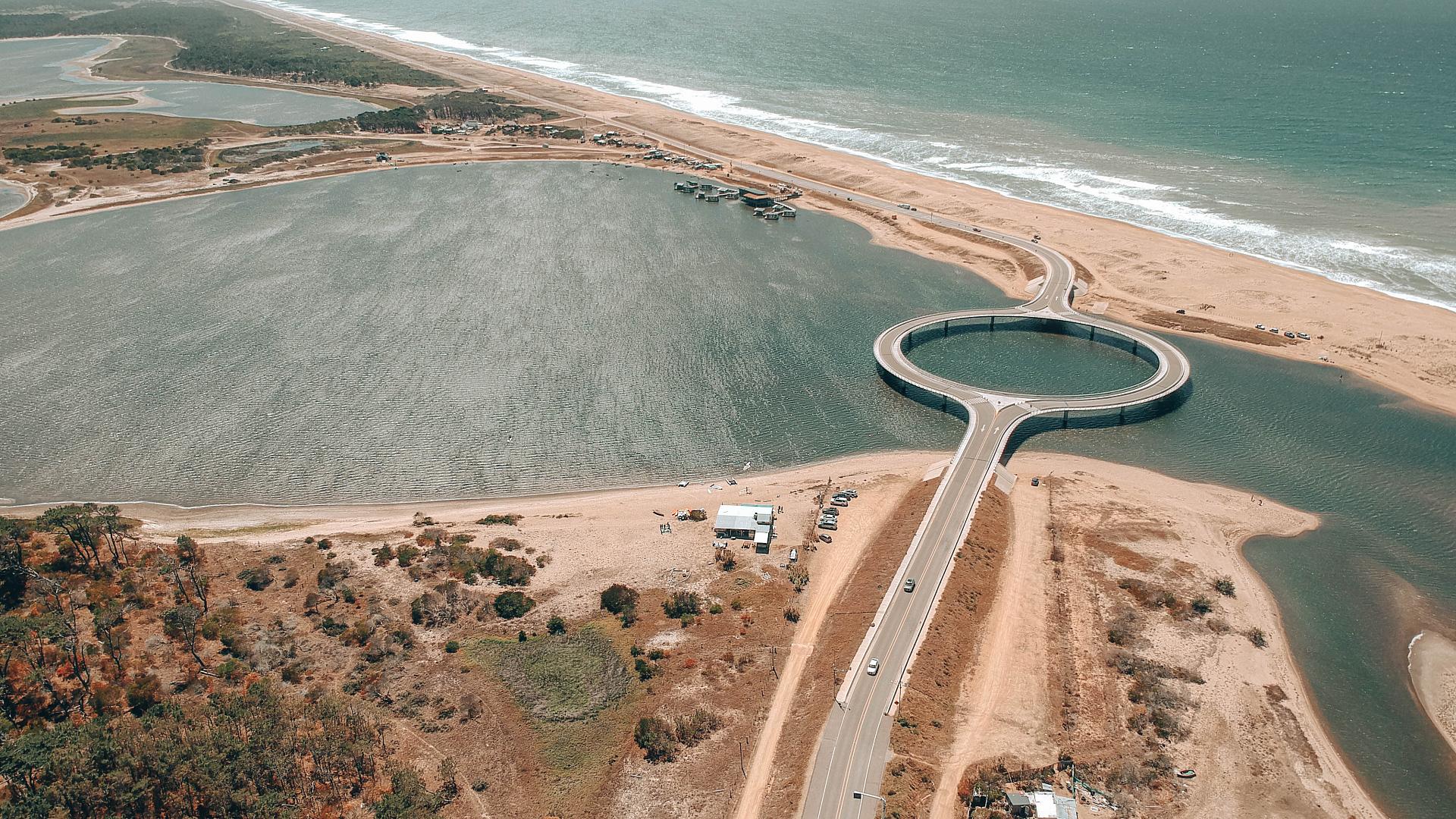Monuments and architecture
Punta del Este’s architecture is a vibrant testament to its rich history and cultural diversity. From iconic sculptures and historical monuments to innovative works of engineering and religious architecture, each structure offers a window into the city’s past and present. Explore how creativity and functionality intertwine in a series of architectural landmarks that define the cityscape and reflect the essence of Punta del Este.
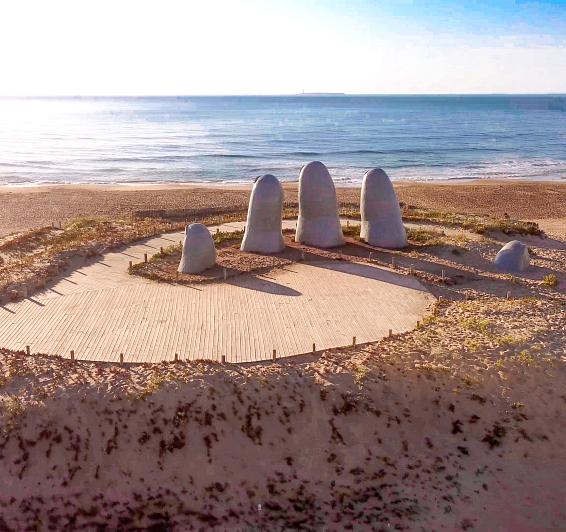
The Fingers
The sculpture of "Los Dedos", also known as "La Mano", is one of the most photographed monuments in Uruguay. Created by the Chilean sculptor Mario Irarrázabal in 1982, this work of art symbolizes the presence of man emerging into life. Located in Playa Brava, it is a meeting point and reference point for all those who visit the city.
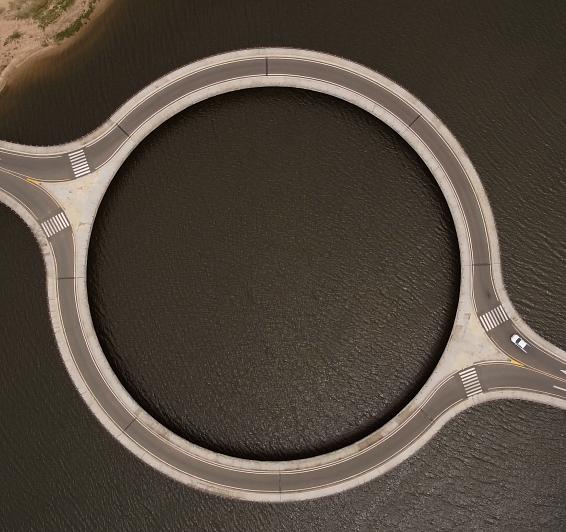
Garzón Lagoon Bridge
This innovative circular bridge, designed by architect Rafael Viñoly, not only connects the towns of Maldonado and Rocha, but also symbolizes the union between development and environmental preservation. Driving across the Garzón Lagoon Bridge is an experience that offers panoramic views of the lagoon and its surroundings, making it a tourist attraction in itself.
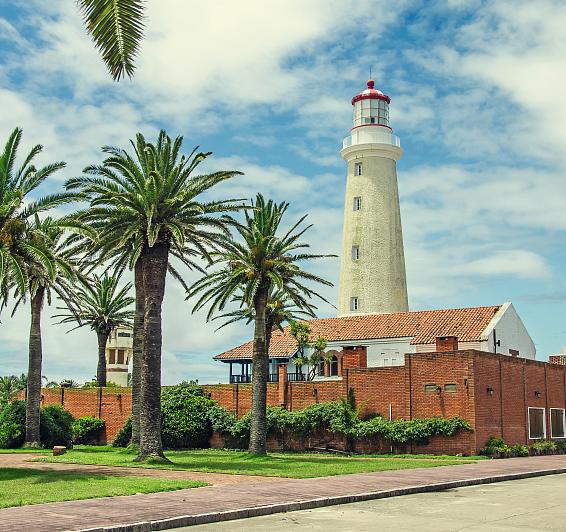
Punta del Este Lighthouse
The Punta del Este Lighthouse, built in 1860, is one of the oldest and most emblematic monuments in the city. This lighthouse not only guides sailors, but also offers visitors a panoramic view that spans from the coast of Punta del Este to Gorriti Island.
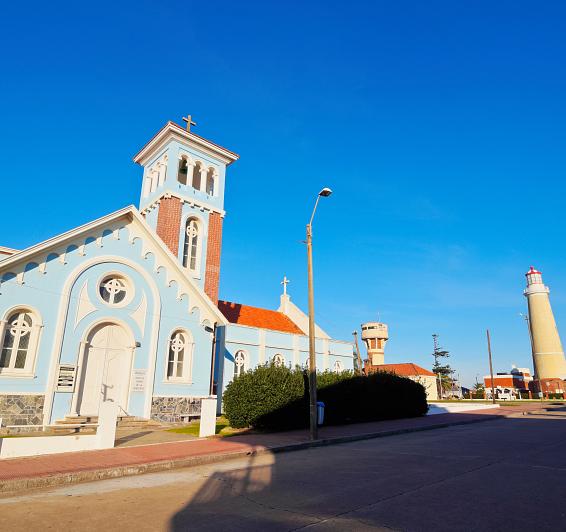
The Candelaria church
The Candelaria Church, with its distinctive blue façade, is an architectural landmark in Punta del Este. Built in 1941, this church is a place of peace and reflection, as well as being an excellent example of the religious architecture of the region.
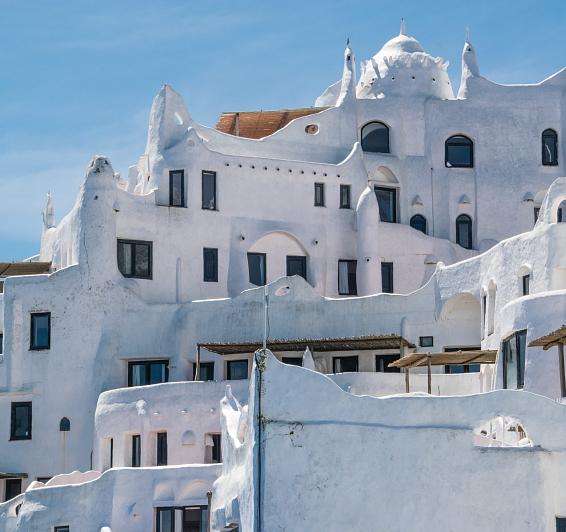
Iconic houses
Punta del Este is a destination where historic and modern architecture merge in a unique way. From the elegant Tudor and Colonial style mansions, built by high society in the 20th century, to the minimalist and avant-garde beach houses, each residence reflects a part of the history and spirit of the place. Also noteworthy are the Casapueblo, a masterpiece by artist Carlos Páez Vilaró, and the strong Mediterranean influence in many buildings. The city balances the preservation of its heritage with the development of new structures, maintaining its essence and sophistication.
